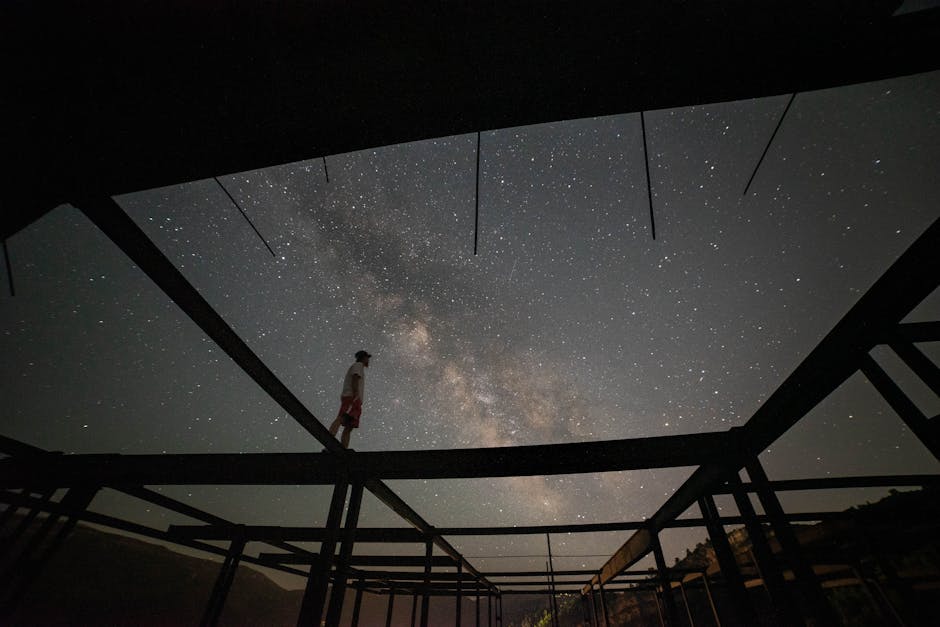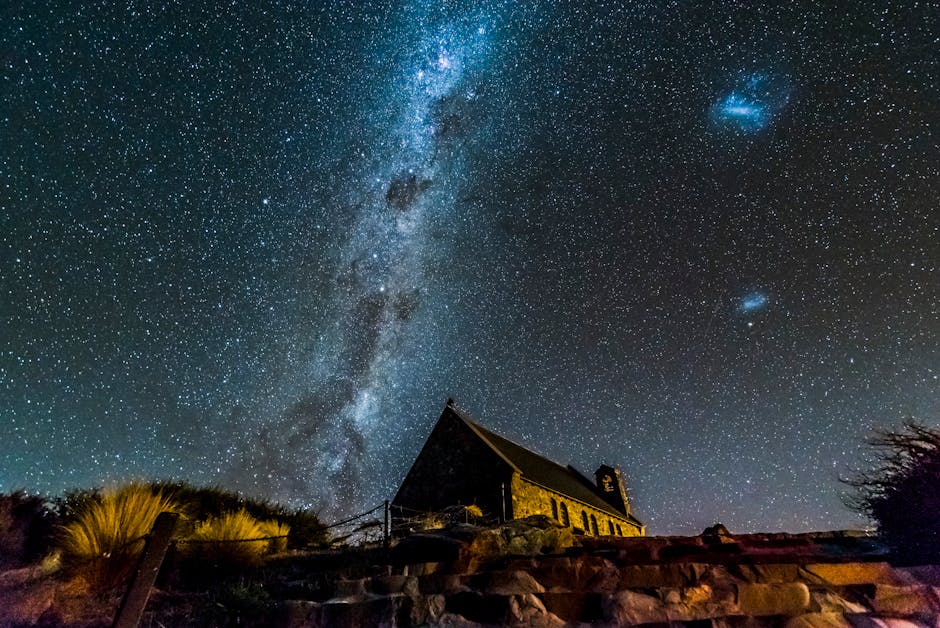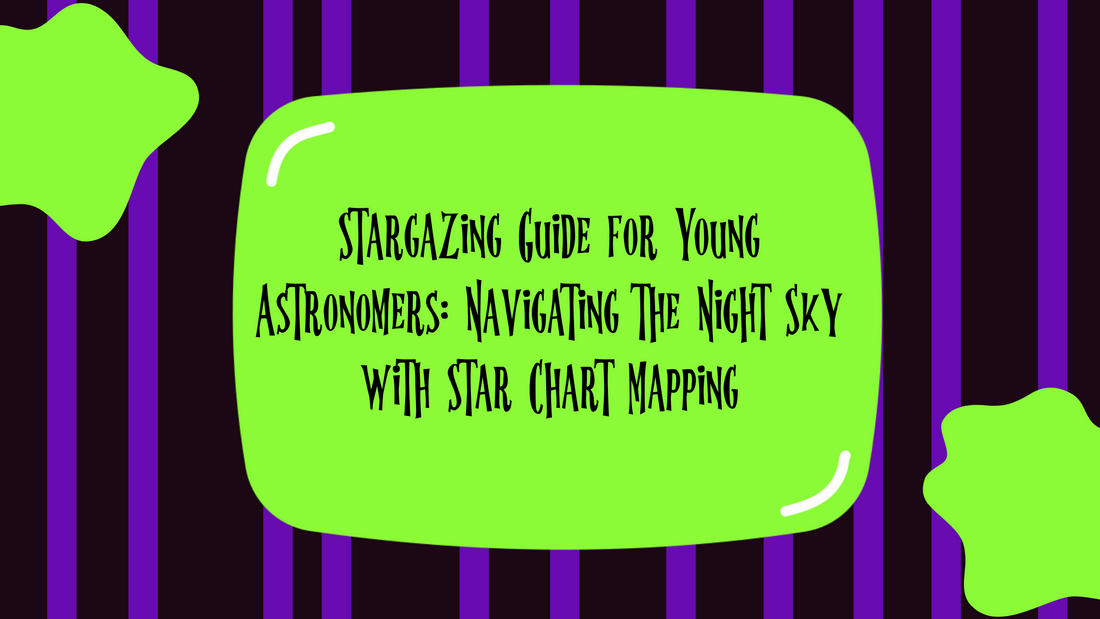As an affiliate, I earn from qualifying purchases, but this doesn't affect the reviews or recommendations—your trust is important to me!
Stargazing Guide for Young Astronomers: Navigating the Night Sky with Star Chart Mapping

Stargazing Guide for Young Astronomers
Your trusted compass for navigating the night sky
As a beginner astronomer, have you ever yearned to journey beneath the star-glittered canvas of the night sky, equipped with just a star chart and a thirst for discovery? Welcome to our Stargazing Guide for Young Astronomers, your trusted compass for navigating the night sky with star chart mapping.
Delve into this enchanting world of astronomy, ideal for kids and budding space explorers looking for a hands-on approach to learning astronomy. From identifying constellations to capturing stunning night sky photography, we'll present a road map to help steer your outdoor astronomy night with star chart mapping.
This guide endeavours to evoke the awe of star gazing, and inspire your own celestial adventures right from your backyard!
As a Young Astronomer: Your First Step into Stargazing
As a young astronomer, your first step into the mesmerizing world of stargazing should revolve around understanding star chart mapping. These maps are not just essential navigation tools but are silent teachers gently guiding your curiosity through the star-studded expanse above. They serve as a beginner astronomer's quintessential aide for identifying constellations, tracking planetary movements, and observing celestial bodies. Much like an adventurous night trek, they introduce us to cosmic landmarks, guiding our eyes to the constellation Orion or to the twinkle of the North Star.
The Journey of Understanding Star Charts
When commencing your journey in outdoor astronomy, it might seem overwhelming to decode the wealth of information on a star chart. Fear not, as there are numerous astronomy tutorials and resources available online. These tutorials break down the fundamentals of reading star charts, covering basics such as the celestial equator, celestial poles, and celestial sphere. They also walk you through the process of identifying different celestial bodies. Remember - viewing through a telescope may provide a close-up experience, but it's the chart that offers you the precious wider context.
The Importance of Star Chart Mapping
Besides offering a method for pinpointing various celestial wonders, navigating the night sky with a star chart enhances your overall knowledge of astronomy for kids. For this reason, it becomes a valuable tool for both your individual learning and group stargazing nights. Sharing this knowledge with your peers not only makes the experience more fun but also helps cement your understanding of astronomy basics.
Choosing Your Star Chart
When choosing your star chart, consider your geographical location on earth, as this directly affects your view of the sky. There are specific star maps available based on different regions – Northern Hemisphere, Southern Hemisphere, and Equatorial, each highlighting different star patterns. Similarly, understanding lunar phases is crucial. By correlating them with your observations, it helps in recognizing changes in the night sky, thereby deepening your appreciation for the celestial ballet.
Capturing the Magic of Night Sky
Of course, the joy of an outdoor astronomy night with star chart mapping is incomplete without the magic of night sky photography. While it might seem like a daunting task for a beginner astronomer, shooting the stars can be surprisingly simple. In essence, it's about capturing the ethereal beauty you witness on your star gazing nights - the vivid Milky Way brushing across the heavens, the mysterious nebulae, or the radiant light of the Moon depending on the lunar phases. All you really need to get started is a good camera, a tripod for stability, and lots of patience.
The Art of Learning Astronomy
Remember, learning astronomy is not about memorizing each star in the sky but about awakening an appreciation for the universe and our place within it. So feel free to take it slow, don't fret over missing out on seeing certain celestial bodies, and prepare to be generous with time. Whatever your learning pace is, just continue looking up to the sky, chart in hand, and let the night sky stir marvel within you.

25 Essential Tools and Resources for Young Astronomers
- - A telescope suitable for beginners, like the Celestron 70mm Travel Scope
- - Star charts or celestial maps to help identify constellations
- - Glow-in-the-dark star stickers for indoor constellation mapping
- - The Stars: A New Way to See Them astronomy book for kids
- - Constellation Viewer Discovery Toy
- - Orion 10015 StarBlast 4.5 Astro Reflector Telescope
- - Astronomy for Kids: How to Explore Outer Space with Binoculars, a Telescope, or Just Your Eyes!
- - A high-quality pair of binoculars for stargazing
- - LED red flashlight for night use – it won’t interfere with night vision
- - Astronomy-themed board games like The Magic School Bus: Space Lab
- - National Geographic Kids Space Encyclopedia
- - A camera and tripod for capturing long-exposure images of the night sky
- - Glow-in-the-dark constellation jigsaw puzzle
- - Moon and Star body pillow for cozy stargazing
- - Inflatable Solar System Set to visualize the planets' locations
- - Star chart pajama set
- - NASA astronaut ice cream as a novelty snack
- - A trip to a local planetarium
- - Star projector for an indoor star show
- - A compass for direction orientation during star navigation
- - Rocket-building kit to understand the physics behind space travel
- - An app for star identification like Star Walk Kids
- - A lunar phase calendar to track Moon’s phases
- - Pop-up book There's No Place Like Space: All About Our Solar System
- - Subscription to space-themed magazines such as National Geographic Kids

In the grand theater of the cosmos
Each of us holds a front-row seat provided we stop to gaze upwards. Equipped with a star chart and imbued with curiosity, the night sky becomes a celestial wonderland, ready for you to explore.
Understand this
At first, you might feel small, insignificant even, under the vast expanse of the universe. But as your eyes trace the constellations mapped on your chart, remember, you're part of this interstellar spectacle too.
So young astronomers, here’s your invitation
Dive into the sea of stars, chart your own route in the heavens, and let the allure of the cosmos spark a lifelong love for stargazing.
In the echoes of Carl Sagan – we are all made of starstuff
Isn't that something worth investigating? Keep stargazing, keep wondering – your celestial journey has just begun.
Other Stuff You May Like:
25 Essential Tools and Resources for Young Astronomers
- - A telescope suitable for beginners, like the Celestron 70mm Travel Scope
- - Star charts or celestial maps to help identify constellations
- - Glow-in-the-dark star stickers for indoor constellation mapping
- - The Stars: A New Way to See Them astronomy book for kids
- - Constellation Viewer Discovery Toy
- - Orion 10015 StarBlast 4.5 Astro Reflector Telescope
- - Astronomy for Kids: How to Explore Outer Space with Binoculars, a Telescope, or Just Your Eyes!
- - A high-quality pair of binoculars for stargazing
- - LED red flashlight for night use – it won’t interfere with night vision
- - Astronomy-themed board games like The Magic School Bus: Space Lab
- - National Geographic Kids Space Encyclopedia
- - A camera and tripod for capturing long-exposure images of the night sky
- - Glow-in-the-dark constellation jigsaw puzzle
- - Moon and Star body pillow for cozy stargazing
- - Inflatable Solar System Set to visualize the planets' locations
- - Star chart pajama set
- - NASA astronaut ice cream as a novelty snack
- - A trip to a local planetarium
- - Star projector for an indoor star show
- - A compass for direction orientation during star navigation
- - Rocket-building kit to understand the physics behind space travel
- - An app for star identification like Star Walk Kids
- - A lunar phase calendar to track Moon’s phases
- - Pop-up book There's No Place Like Space: All About Our Solar System
- - Subscription to space-themed magazines such as National Geographic Kids











